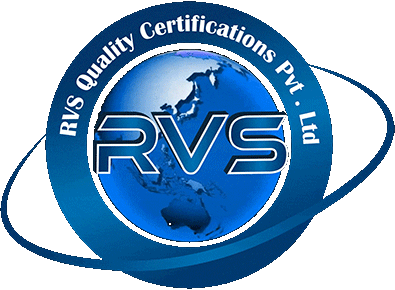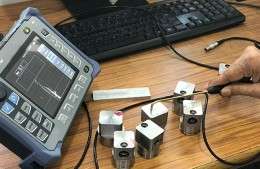I have been out of industrial activity after completing my graduation for about 2 years, then RVS Quality Certifications Pvt Ltd has changed my outlook on my career. Adopting a course in NDT has helped me launch my career.
Reliable Techniques For Achieving Building Structural Stability Anywhere
- By: Admin

Structural stability is undoubtedly an engineering issue, but in turn, it represents a subtle promise that every building makes to its owners and tenants. From skyscrapers resisting high winds to bridges enduring sustained loads, Building Structural Stability requires accuracy, planning and craft. The ultimate goal in the new building methods and reinforcement of existing structures is still the same: that the building remains safe, durable and functioning anywhere under any condition. Every project must amalgamate the techniques available today, expert evaluations and compliance with international norms to create places that will stand the test of time.
Precision That Shapes Stronger Foundations
One of the early steps to secure any structure is to understand its condition and what it is vulnerable to. Thus, the importance of Condition Monitoring Services increases, provided by a reputed service provider such as RVS Quality Certifications Pvt Ltd in this matter. This means that such services involve the continuous monitoring of a structure's behavior through sophisticated sensors, measurements and inspections. From monitoring stress and strain levels to early signs of wear, condition monitoring is useful for providing action-oriented data to engineers. This allows very early issues to be addressed before they escalate into critical concerns and become costly repairs, shortening the useful life of the building. In this constant feedback mechanism any high-rise downtown or a lonely industrial plant stability of the structure is never compromised.
Advanced Testing For Stability Assurance
Visual inspections alone are no longer able to guarantee structural stability. The emergence from the late 20th century in non-destructive testing methods, which became a great deal more precise and profound, allowed our inspection methods much improve. The Phased Array Ultrasonic Testing is the most advanced non-destructive testing method that has found its application in construction and infrastructure. Depending on the use of several ultrasonic beams, it provides detailed images of internal flaws or weaknesses in the material without actually damaging it. This technology allows for precise inspection of welds, joints and other critical components of a building's framework. The result is a very clear understanding of structural integrity before the occurrence of any issues, thus bettering safety compliance with very high-quality standards-rendering it essential for more stability-centered work.
Techniques For The Global Stability Standard
No one technique can underwrite total stability; rather, the strongest structures owe their strength to the combined efforts of several techniques. Condition monitoring finds early warning signs, ultrasonic testing reveals hidden flaws and third-party inspections keep compliance. Together, they create a cycle of prevention, detection and verification that underpins the resilience of any given building. In areas prone to earthquakes, floods or extreme temperatures, an integrated approach to stability becomes even more pertinent. Location-specific stability measures ensure that the buildings are made safe and acceptable regarding the environmental challenges they face. Moreover, this international treatment guarantees uniformity and reliability, irrespective of geographical differences.
Ensuring Service Reliability With Independent Verification
The credibility of even the most advanced construction methods and testing techniques needs to be ensured via independent verification. Here comes the Third-Party Inspection Services as an important layer of assurance. Independent inspectors evaluate materials, construction techniques and the final product against regulatory and safety standards. Such an unbiased evaluation takes conflicts of interest away from the equation and assures project owners of the structural integrity. These services usually involve the preparation of relevant documentation, supervision of testing and certification procedures and verifying that the building is ready for occupation. Having third-party professionals involved guarantees that all stakeholders are assured that the structure's stability is an objective, expert analysis rather than the result of in-house assessments. Such a crucial procedure extends to public infrastructure, industrial facilities and residential complexes, assuring both investments and lives.
Faster than ever, the whole construction industry is changing and so are the methods of ensuring structural stability; these are now turning more intelligent, more precise and globally adaptable. Innovation and collaboration stand not only at the cutting edge of technological advancement, but also at the foundation of monitoring equipment that gives real-time insight and state-of-the-art testing that sees the unseen in the future of structural safety.
RVS is the absolute best value to learn Aerospace NDT Training Course to nurture my skills. I am completely satisfied with how affordable the service they provide. Thanks RVS Team for constant support.
I would like to thank RVS for their time and patience in helping me learn and grow with my NDT courses. I was able to work and learn at the same time, with no pressure. I would recommend RVS to anyone seeking to work and take courses at the same time. I accomplished the course and today I'm a Certified PCN Level II UT engineer.
RVS helped our new hires to acquire the comprehensive training they need, as well as for refresher courses for our current employees. This has worked well for us in obtaining the necessary NDT certifications.
Just a few lines to express my gratitude for your outstanding service over the past year. We would have no issue in referring to your organisation because of your customer devotion and professionalism.
NDT is employed in a wide range of industries, including oil and gas, aerospace, energy, power, nuclear, and transportation, with nearly endless career opportunities. A job in NDT is extremely dynamic, and ongoing training is required.
One of the advantages of a four-year NDT programme is that students can study in a more focused and instructive manner. For graduates, this offers up a plethora of new NDT employment options, including quality assurance, management, engineering design, research, NDT training, and teaching.
Non-Destructive Testing (NDT) Training Courses - Levels 1, 2 and 3.
The PCN (Personnel Certification in Non-Destructive Testing) is a programme that meets the BS EN ISO 9712 requirements for NDT technicians and supervisors. It is founded in the United Kingdom, but it has an impact on a number of countries in the European Union.

lgv6.jpg)






